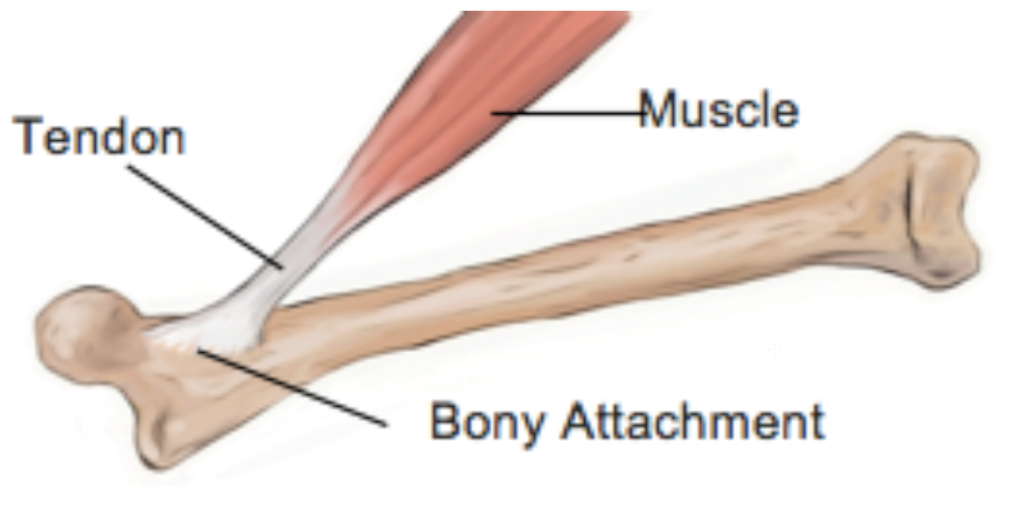Understanding Tendons: The Connective Link Between Muscles and Bones
Tendons are crucial yet often overlooked components of our musculoskeletal system. Connecting muscles to bones, they play a vital role in facilitating movement by transmitting the force generated by muscle contractions to the skeleton. But what makes tendons unique, and how do they compare to muscles and bones?
Structure and Composition
Tendons are tougher than muscles, yet softer than bones. This characteristic allows them to withstand the high tension that occurs during activities like walking, running, or lifting objects. Their composition consists mainly of collagen fibers, which give tendons their tensile strength and resistance to stretching. This makes tendons less stretchy than muscles but more flexible than bones.
Collagen: About 80% of a tendon’s dry weight is collagen, mostly type I collagen, which provides the mechanical strength tendons are known for.
Proteoglycans: These are proteins found between collagen fibres that help with tendon hydration and maintaining their structural integrity.
Elasticity and Brittleness
When comparing elasticity, tendons fall between muscles and bones. They are less stretchy than muscles but more flexible than bones, allowing them to act as shock absorbers. However, this flexibility comes with a cost. Tendons are more brittle than muscles, meaning they are more prone to tearing or injury under excessive strain. Fortunately, they are less brittle than bones, so they can absorb more impact before breaking.
Stress and Strain: Tendons can stretch slightly (about 5% under load), but if they stretch beyond this limit, they risk tearing.
Healing and Recovery
One of the challenges with tendon injuries is their slow healing process. Tendons have a poorer blood supply compared to muscles and bones, which slows down the repair of damaged tissues. As a result, injuries like tendinitis or tendon tears take longer to heal than a muscle strain or even a bone fracture.
Blood Supply: The limited blood flow, especially in the middle portion of long tendons like the Achilles, makes nutrient delivery and healing slower.
Recovery Time: Tendons may take several months to heal, depending on the severity of the injury.
Common Tendon Injuries
Several tendon-related injuries are common, especially among athletes or people who perform repetitive movements.
Tendinitis: This is inflammation of the tendon, usually caused by overuse, leading to pain and swelling. It commonly occurs in areas like the shoulder (rotator cuff tendinitis), elbow (tennis elbow), or the Achilles tendon.
Tendinosis: Unlike tendinitis, which is an acute inflammatory condition, tendinosis refers to chronic degeneration of the tendon fibers, typically without inflammation.
Tendon Rupture: A complete tear of the tendon can happen with sudden, extreme stress. For example, the Achilles tendon is prone to ruptures during sports like basketball or tennis.
Tendon Health and Injury Prevention
Maintaining tendon health is essential, especially for athletes or people with physically demanding jobs. Here are some ways to keep your tendons healthy:
Proper Warm-up: Before exercising, warming up your muscles and tendons can increase elasticity and reduce the risk of injury.
Strength Training: Strengthening the muscles around tendons can help support and reduce stress on them.
Stretching: Regular stretching helps maintain tendon flexibility and range of motion.
Gradual Progression: When increasing workout intensity or physical activity, do it gradually to avoid overloading tendons.
Rehabilitation After Tendon Injury
Recovering from a tendon injury requires a balanced approach of rest and controlled movement:
Rest and Protection: Initial rest is critical to avoid further damage to the tendon.
Physiotherapy/Sports Chiropractic: Specialised exercises to gently strengthen the tendon and restore flexibility are crucial for recovery.
Eccentric Exercises: These exercises, which involve lengthening the tendon under load (e.g., lowering a weight), are particularly effective for tendon rehabilitation.
Nutritional Support: A diet rich in collagen, vitamin C, and anti-inflammatory foods can support the healing process.


